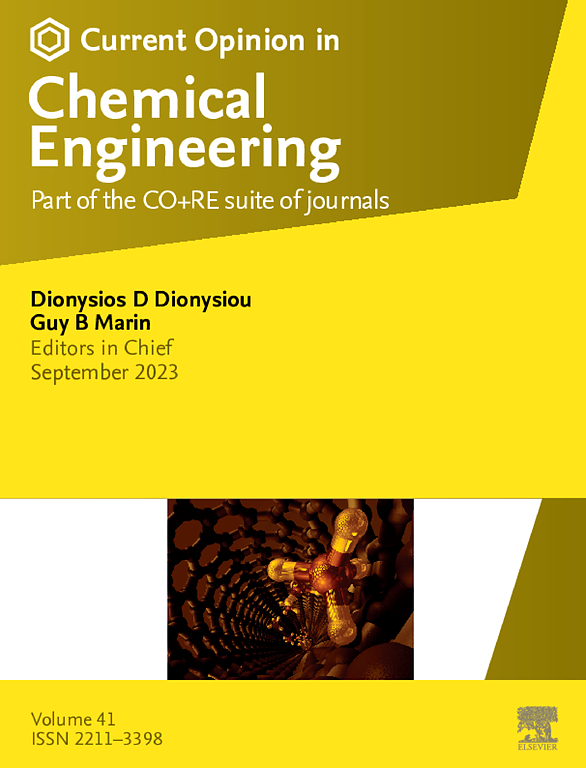地表水和废水中微塑料去除技术的评价
IF 6.8
2区 工程技术
Q1 BIOTECHNOLOGY & APPLIED MICROBIOLOGY
引用次数: 0
摘要
微塑料和更难以捉摸的纳米塑料现在被认为是地表水和废水中普遍存在的、持久的、潜在的有毒污染物。尽管越来越受到关注,但现实世界的缓解措施仍然有限。本文对2016年至2025年间报告的主要清除技术的性能、可扩展性和生命周期影响进行了分析。尽管尺寸隔离膜仍然是绝对去除效率的基准(MPs <;0.5 μ m为95%),但它们会产生最高的单位能量需求和慢性污染。高亲和吸附剂,包括锆基金属有机框架、石墨烯-氧化物杂化物和工程生物炭,在低得多的能量输入下实现了90-97%的去除率,但它们的生命周期可行性取决于闭环再生和避免聚合物脱附。磁性复合材料(例如Fe₃O₄-ZIF-8)在几分钟内提供近定量捕获(~ 98%),但仍然缺乏现场规模的演示和强大的磁性回收方案。混凝和电混凝提供了最具成本效益的高通量解决方案(77% - 98%),但将塑料负担转化为富含金属的污泥。高级氧化工艺独特地矿化塑料(≤98.4%),尽管需要较高的试剂和能源成本,而基于自然的策略(微生物群落、超热堆肥、人工湿地)在较长的停留时间内可实现40-90%的去除率,并且对环境变化高度敏感。在所有类别中,纳米塑料(100纳米)的保留是最薄弱的环节,强调了标准化检测、纳米尺度选择材料和中试规模验证的必要性。为了支持有效的实施,我们确定了关键的研究重点,包括污垢控制、吸附剂再生、污泥增值、催化剂稳定性和风险评估,并提出了一个综合的处理层次,将低能耗的大块去除与有针对性的抛光和安全的报废管理结合起来。本文章由计算机程序翻译,如有差异,请以英文原文为准。
Assessment of removal technologies for microplastics in surface waters and wastewaters
Microplastics and the even more elusive nanoplastics are now recognized as ubiquitous, persistent, and potentially toxic contaminants in surface waters and wastewaters. Despite growing attention, real-world mitigation remains limited. This critical review interrogates the performance, scalability, and lifecycle implications of the principal removal technologies reported between 2016 and 2025. Although the size-exclusion membranes remain the benchmark for absolute removal efficiency (>95% for MPs <0.5 µm), they incur the highest unit-energy demand and chronic fouling. High-affinity sorbents, including Zr-based metal–organic frameworks, graphene-oxide hybrids, and engineered biochars, achieve 90–97% removal at far lower energy input, yet their lifecycle viability hinges on closed-loop regeneration and avoidance of polymer desorption. Magnetic composites (e.g. Fe₃O₄-ZIF-8) deliver near-quantitative capture (∼98%) within minutes, but field-scale demonstrations and robust magnet-recovery protocols are still lacking. Coagulation and electrocoagulation offer the most cost-effective high-throughput solutions (77–98%) but shift the plastic burden into metal-rich sludges. Advanced oxidation processes uniquely mineralize plastics (≤98.4%) albeit at high reagent and energy cost, while nature-based strategies (microbial consortia, hyperthermophilic composting, constructed wetlands) deliver 40–90% removal over longer residence times and remain highly sensitive to environmental variability. Across all classes, nanoplastic (<100 nm) retention is the weakest link, underscoring the need for standardized detection, nanoscale-selective materials, and pilot-scale validation. To support effective implementation, we identify key research priorities, including fouling control, sorbent regeneration, sludge valorization, catalyst stability, and risk assessment, and propose an integrated treatment hierarchy that couples low-energy bulk removal with targeted polishing and safe end-of-life management.
求助全文
通过发布文献求助,成功后即可免费获取论文全文。
去求助
来源期刊

Current Opinion in Chemical Engineering
BIOTECHNOLOGY & APPLIED MICROBIOLOGYENGINE-ENGINEERING, CHEMICAL
CiteScore
12.80
自引率
3.00%
发文量
114
期刊介绍:
Current Opinion in Chemical Engineering is devoted to bringing forth short and focused review articles written by experts on current advances in different areas of chemical engineering. Only invited review articles will be published.
The goals of each review article in Current Opinion in Chemical Engineering are:
1. To acquaint the reader/researcher with the most important recent papers in the given topic.
2. To provide the reader with the views/opinions of the expert in each topic.
The reviews are short (about 2500 words or 5-10 printed pages with figures) and serve as an invaluable source of information for researchers, teachers, professionals and students. The reviews also aim to stimulate exchange of ideas among experts.
Themed sections:
Each review will focus on particular aspects of one of the following themed sections of chemical engineering:
1. Nanotechnology
2. Energy and environmental engineering
3. Biotechnology and bioprocess engineering
4. Biological engineering (covering tissue engineering, regenerative medicine, drug delivery)
5. Separation engineering (covering membrane technologies, adsorbents, desalination, distillation etc.)
6. Materials engineering (covering biomaterials, inorganic especially ceramic materials, nanostructured materials).
7. Process systems engineering
8. Reaction engineering and catalysis.
 求助内容:
求助内容: 应助结果提醒方式:
应助结果提醒方式:


